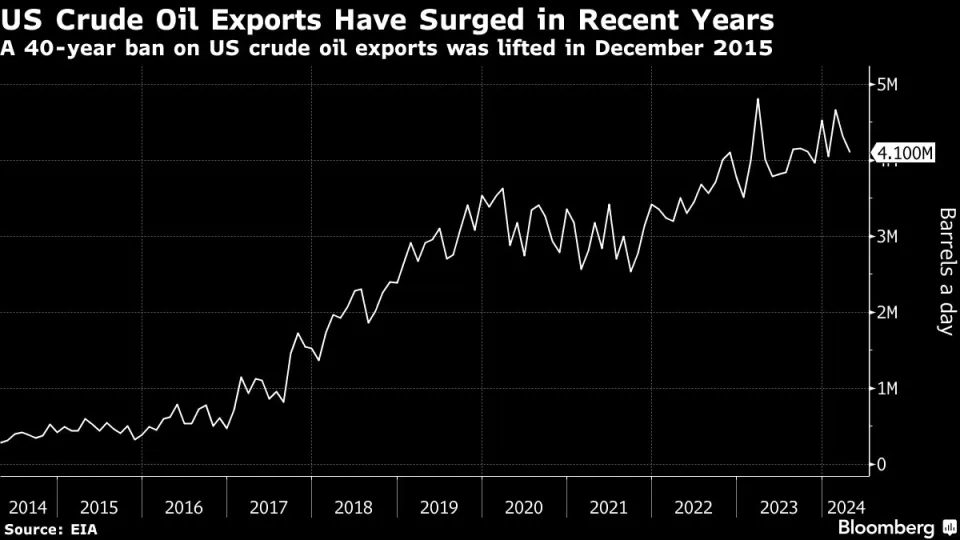Key pipelines that transport oil produced in the Permian Basin to the Port of Corpus Christi are more than 90 percent full, and the congestion is likely to get worse. By the second half of 2025, the pipelines could be 94 percent or 95 percent full. The limited pipeline capacity in the Nation’s top producing oil state comes at a time when the United States is producing more oil than any other nation, with production set to hit a new record next year. The Permian region, one of the top producing shale basins in the world, accounts for nearly half of all U.S. oil production. While output is set to keep growing, it will be difficult for that incremental output to reach international buyers without ample pipeline capacity, threatening to cap U.S. oil exports at a time when the world needs more oil.
Without sufficient pipeline capacity, pockets of oversupply will be created domestically and supply tightness in other regions of the world will be exacerbated—nations that rely heavily on U.S. oil due to Russia’s invasion of Ukraine and OPEC+ supply cuts. Some of the oil could be rerouted to the Houston area to alleviate some congestion. OneOK’s Longhorn and BridgeTex pipelines could offer alternative options to transport oil to the Gulf Coast. Meanwhile, a plan to expand Enbridge Inc.’s Gray Oak pipeline system will also reduce some bottlenecks to Corpus Christi. The company’s goal is to increase capacity by 120,000 barrels per day, but that will not bring overall regional utilization below 90 percent.
The 850-mile Gray Oak pipeline transports light oil from Crane in Texas to Corpus Christi and has a nameplate capacity of 1 million barrels per day. The company also plans to add another 2 million barrels of storage at its Enbridge Ingleside Energy Center oil export facility at Corpus Christi and increase the overall crude storage capacity to 20.5 million barrels by 2025. Enbridge has also acquired two docks and nearby land for $200 million, providing future growth opportunities that optimize existing operations and create growth for multiple products. The Gray Oak expansion will be fully online in 2026 and incremental volumes will serve its Ingleside facility, which had a record quarterly volume of oil exports and a single-day loading of over 2.3 million barrels.
Oil exports from the U.S. Gulf Coast averaged 4.2 million barrels per day in July. Of that, 1.1 million barrels per day originated from the Enbridge Ingleside terminal–a record high. Oil exports from Ingleside have increased from 659,000 barrels per day in April.

China’s oil demand and the price of Brent crude oil will play a role as well in the medium-term supply-demand balance.
Enbridge has also taken a final investment decision for the proposed Blackcomb natural gas pipeline that will transport 2.5 billion cubic feet per day of feed gas from the Permian Basin to an export facility on the U.S. Gulf coast, providing much needed export capacity for Permian shippers. Private firm WhiteWater Midstream will construct and operate the 365-mile, 42-inch diameter Blackcomb Pipeline. It is expected to begin operation in the second half of 2026, subject to the receipt of customary regulatory and other approvals.
The United States Leads the World in Oil Production
Over the last decade, the United States has become the world’s top producer of oil, surpassing Saudi Arabia and Russia. Over the last three decades, the United States, Saudi Arabia, and Russia have alternated as the top oil producers. During the 1990s, Saudi Arabia dominated oil production, as the petroleum sector accounts for about 42 percent of the country’s GDP, 87 percent of its budget revenues, and 90 percent of its export earnings. During the 2000s, Russia surpassed Saudi Arabia in production during some years, following strategic investments in expanding its oil infrastructure. Over the 2010s, the United States increased its domestic oil production, much of it due to hydraulic fracturing combined with horizontal drilling, commonly referred to as “fracking” in the shale formations ranging from Texas to North Dakota. It became the world’s largest oil producer in 2018, outproducing Russia and Saudi Arabia, and continues in that role, despite the Biden-Harris Administration’s long list of efforts to stymie it. In 2022, the United States accounted for 14.7 percent of oil production worldwide, compared to 13.1 percent for Saudi Arabia and 12.7 percent for Russia.
Conclusion
With U.S. oil production hitting record highs, Texas pipeline constraints could throttle U.S. oil exports at a time when uncertainty looms in the energy and geopolitical arenas. Export limitations such as pipeline constraints on U.S. energy products will hurt the European Union and other major trading partners that heavily rely on the United States for energy, particularly with the Russian invasion of Ukraine and the war between Israel and the Hamas in Gaza and the associated unrest in the Middle East. The United States needs to make it easier to permit and build new energy pipelines.